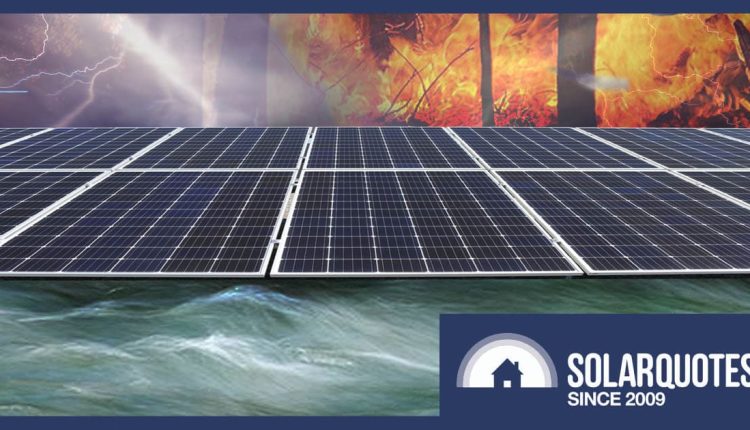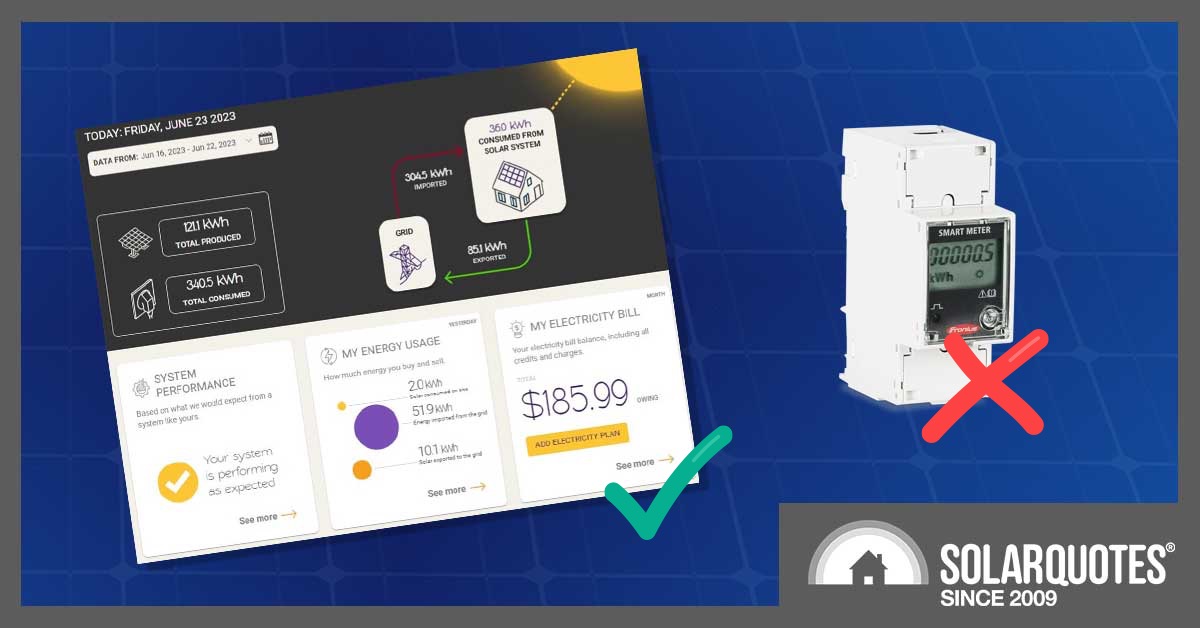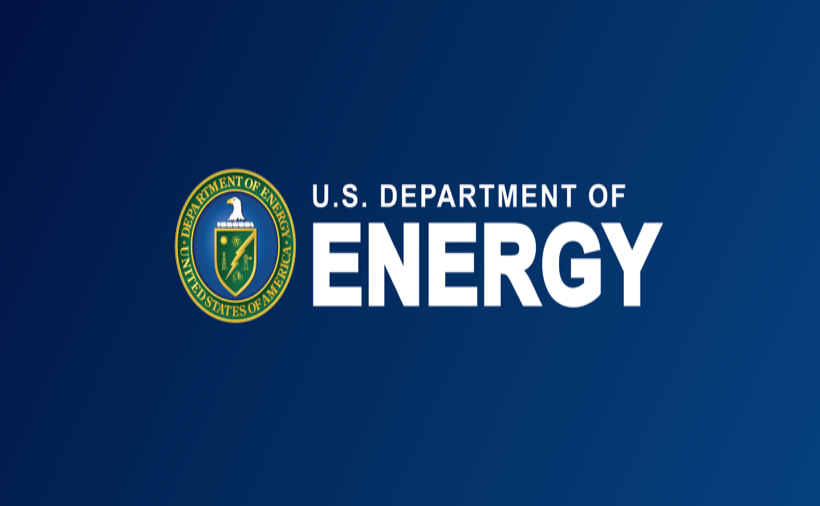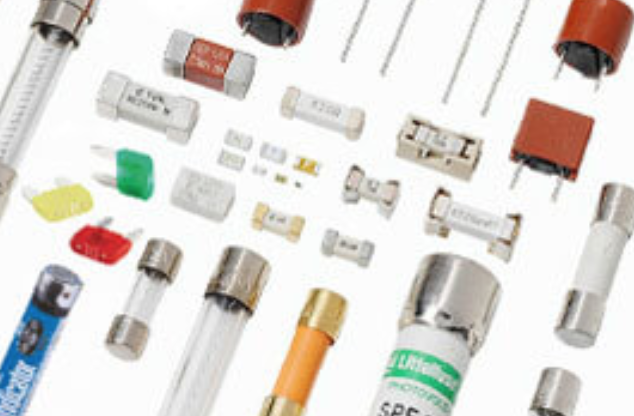When Nature Strikes: An Emergency Response Guide for Solar Owners
Our hearts go out to those Australians facing the current onslaught of floods nationwide. Times like these underscore the importance of knowing what to do in an emergency without the added stress of figuring it out on the spot.
This guide provides simple, no-nonsense steps to help you protect yourself and your solar panels and batteries during the critical moments of a natural disaster. Whether bracing for impact or already knee-deep in it, let’s ensure your energy setup is the least of your worries.
The Australian Warning System (AWS)
Australia’s warning system, established before the 2020/2021 fire season, uses a nationally consistent protocol that operates on three levels. On the same subject : array.
- Advice (Yellow): An incident has started. There is no immediate danger. Stay up to date in case the situation changes.
- Watch and Act (Orange): There is a heightened threat level. Conditions are changing, and you need to start taking action now.
- Emergency Warning (Red): This is the highest level of warning. You may be in danger and need to take action immediately.
Each warning level has a set of action statements issued by the relevant state emergency authority to give the community clear advice about what to do. These calls to action are unlikely to provide information about your rooftop solar or battery systems, so it’s prudent to have a plan in advance.
Australian warning system icons – bushfire, cyclone, flood, and extreme heat.
What To Do With Your Solar During An Emergency
Obviously, you must prioritise the safety of yourselves and your family above property. To see also : array. It’s best to activate any plans during the “Advice” and “Watch and Act” warnings rather than the “Emergency Warning,” by which time it’ll likely be too late.
The following advice pertains to your solar/battery system only. Always prioritise the official emergency warning from your state emergency service above all else.
Warning Level – Advice (Yellow)
- Monitor the threat/conditions and follow emergency warnings.
- Have a battery-operated AM radio on standby, tuned in to ABC.
- Check/charge backup batteries and UPS.
Warning Level – Watch and Act (Orange)
- Grid-Connected Solar: Shut down all grid-connected rooftop PV solar systems using the appropriate shutdown procedure.
- Battery Backup Systems: Check/activate battery backup modes for critical loads. Switch off the battery if you’re preparing to evacuate.
- Off-Grid Solar: Assess the need for essential loads. Turn off non-essential loads. Shut down the whole system if you’re preparing to evacuate.
- Continue monitoring the threat/conditions and emergency warnings.
Warning Level – Emergency Warning (Red)
- You should have activated your solar/battery emergency plan before seeing this warning level.
- Follow the emergency warning advice to either evacuate or take shelter.
- If evacuating, turn off the main switch only if it is safe.
- Continue monitoring the threat/conditions and emergency warnings.
Before The Event
Practice Shutting Down Your System
Practice shutting down your system during the day when you’re not under pressure. A grid-connected rooftop solar system should have the shutdown procedure detailed on the front of the inverter and/or the main switchboard. See the article : array. It should be something like this:
- Turn off the solar supply main switch (located in your main switchboard and/or next to the inverter) to isolate the AC grid from the inverter system.
- Turn off the switch on your inverter marked ‘PV Array’ or DC Isolator’ to isolate the DC solar panels from the inverter.
Switching off the AC supply first is essential so it shuts down the inverter. Then, the DC switch will not be under load while being switched. To turn the system on again, use the reverse order – DC isolator on first, followed by AC (solar supply main switch.)
Battery systems will have an additional step to turn off the DC battery isolator. It’s advisable to follow the manufacturer’s shutdown procedure for your particular battery system.
Off-grid solar systems have a different shutdown procedure depending on factors such as configuration, connected loads, and backup generator. If you have an off-grid system, I’m sure you already know this.
Inverter shutdown procedure for a grid-connected rooftop solar system. Note that there may be alternative names. “Main Switch Inverter Supply” is the same as “Solar Supply Main Switch”. “Integrated DC Isolator” may be used instead of “PV Array” or “DC Isolator”.
Other Pre-emptive Measures
- Keep your battery topped up at the first hint of a likely emergency event.
- Ensure you can bypass or manually operate electric gates, locks and garage doors.
- Clean gutters and drains, and secure loose items.
- Check your insurance.
Hazards During An Emergency
Although you’ve already turned off the inverter system using the above procedure, the solar array and DC cabling are still live and potentially dangerous during a flood, storm or bushfire. There may be a rooftop isolator to de-energise the DC coming from the solar panels. However, the risk of injury trying to turn it off may be greater than the risk caused by the energised solar array.
It’s best to leave it well alone. Stay clear if possible, and tell any emergency service personnel who attend your property that you have solar installed and the system’s status.
If a flood event looks imminent and not upon you already, you should turn off the mains power in addition to solar power. However, if any switches or electrical components are wet or inundated with water, it’s too late, and you should keep a safe distance from them.
This is the standard configuration for a grid-connected string inverter system with no battery. Note that with all ground-level isolators switched off, there are still live DC cables in the building fed from the solar panels via the PV roof isolator (if one exists) as far as the PV isolator next to the inverter. It’s recommended to stay well clear and not attempt to turn off the roof isolator yourself.
What To Do After An Incident
After the proverbial smoke has cleared, please don’t rush back in to switch your system back on to see if everything works. A visual inspection is the first thing to do. Storm damage from falling tree branches and hail might be apparent, but there may be more to it than meets the eye. Storms can damage cabling, bushfire embers may be quietly burning, and water ingress from floods may have gone unnoticed.
If damage is evident, if there is any sign of dampness, or if you’re in doubt, don’t attempt to turn on the system. Contact your insurer, and they will organise a certified solar installer to come and check it out. As you may be aware, you might not be first in the queue.
On the other hand, assuming you’re confident that there’s no damage and everything looks safe, you might like to cautiously try to turn your system back on. Do it in the reverse order that you turned it off. Looking at the inverter display screen, if it has one, there shouldn’t be any red lights indicating ‘earth fault’ or ground fault’. Green lights only, thanks; otherwise, turn it straight back off and contact your insurer.
One of these SMA inverters was flood damaged. Can you tell which one? Me neither. Best to get a diagnosis before turning them on.
Stay Safe Out There
Hopefully, this guide reinforces what you already know to be common sense. In a perfect world, you’ll never have to use it, but that’s not where we live. Wishing you the best and, above all, stay safe out there.






Comments are closed.